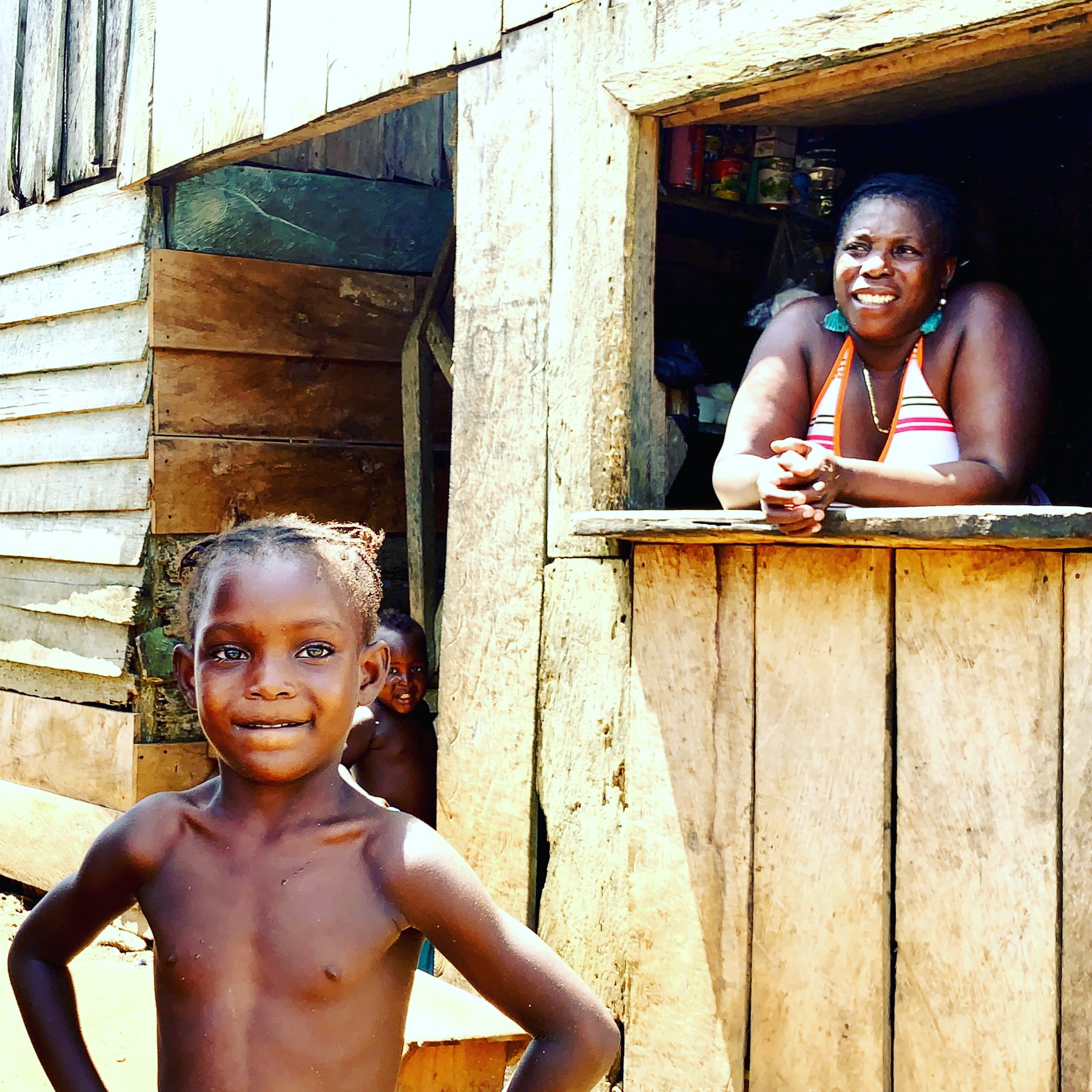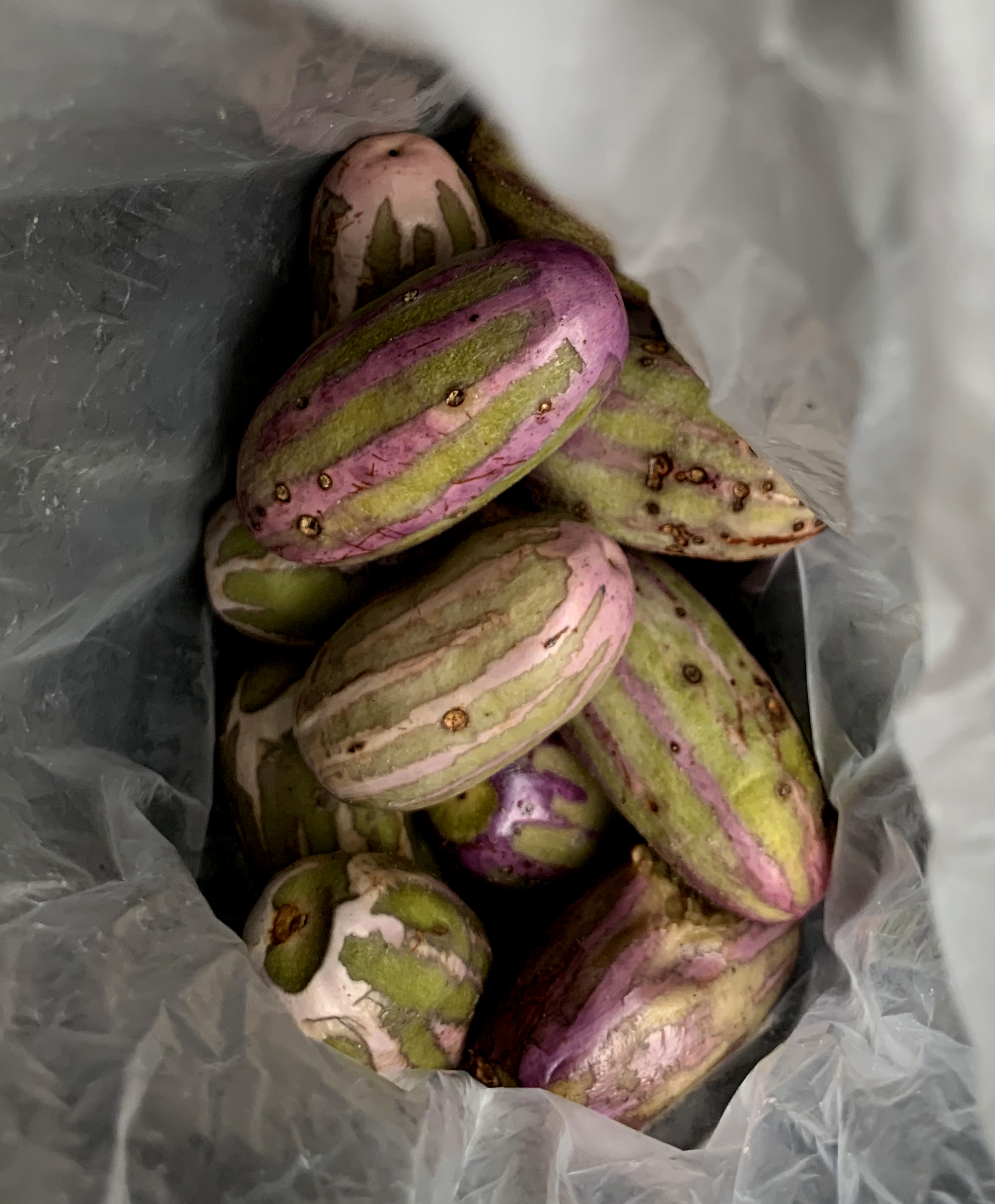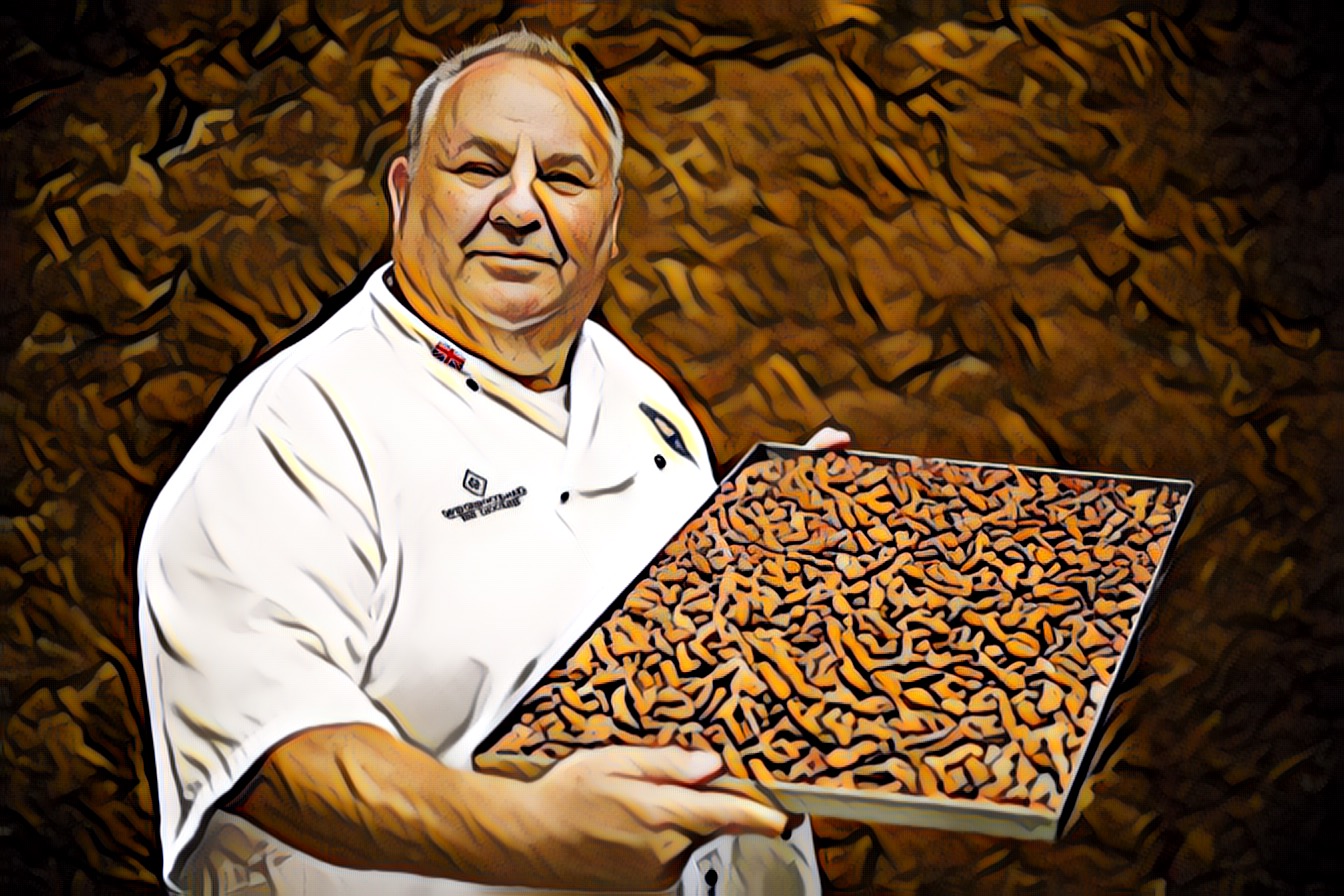
From the Africa’s second smallest country the islands are a interesting fusion of sub-Saharan African with a with a heavy slash of Portuguese flavours mixed with a few local ingredients unique to the islands.
Every lunchtime, in every village, there will be at least one cafe serving simple tasty local food and a drinks; just ask "Onde ha comida quente?"
The menu will often be fish or chicken with manioc, (a yellow-red flowering wild plant that grows by the roadside its roots are a popular food, ground into flour and made into a pudding a bit like fufu in Ghana) fried banana or maybe jackfruit,
You will defiantly find Feijoada a wholesome bean stew made with either pork or fish and often served with riz creole – (seasoned rice).
Everything comes with some spicy red malagueta piri-piri sauce
Street food
grilled corn-on-the-cob,
 safou also known as African pear. Safou, or butter fruit, is a fruit specific to Africa. when this fruit is cooked it taste is like butter. It consists of dark blue to purple colours. The fatty acid, amino acid and triglyceride enzymes present in it are capable of satiety it’s one of the fruits recommended in weight control programs.
safou also known as African pear. Safou, or butter fruit, is a fruit specific to Africa. when this fruit is cooked it taste is like butter. It consists of dark blue to purple colours. The fatty acid, amino acid and triglyceride enzymes present in it are capable of satiety it’s one of the fruits recommended in weight control programs.
Fish
.JPG)
Flying fish (peixe voador), are popular you can see these split open and laid out on racks to dry on the beach. A light delicate taste, but they are full of small bones so be careful.
Popular fish in restaurants is the red grouper (cherne) and sea bass (corvina), But don’t miss out trying con-con, an ugly, prehistoric-looking fish grilled and served traditionally with baked breadfruit.
Barriga de peixe:
grilled Atlantic sailfish belly served with rice (arroz), breadfruit or manioc. Beans (feijao) are a staple food.
Another staple is banana cozida the bland banana is complemented by a spicy red malagueta piri-piri sauce that’s served everywhere
Stews
Stews are always tasty and great value.
Calulu
the signature dish of São Tomé a dried smoked fish in a beautiful sauce made with fresh oca leaves, palm oil, okra, malagueta chilli and watercress, plus a huge variety of fresh local herbs, which delivers a multi-layered dish that has to be tried.
This is a special dish it can take up to five hours to prepare. Other similar dishes are blabla and djogo, and cachupa a popular Cape Verdean dish cooked with corn, green and broad beans. It is not that easy to find these time-intensive traditional specialities and you may have to order them a day in advance;
Bat stew
On public holidays and celebrations (festas), such as saints’ days, you will get the opportunity to try delicacies like estufa de morcego: bat stew.
Other traditional dishes include fish, crab or meat with beans, rice or plantains, and omelettes cooked with endemic spices, some thought to have aphrodisiacs qualities.
A new spice to me was Ossame, grains of paradise, Melegueta pepper, alligator pepper, Guinea grains
The fruit is eaten by locals and the seeds can be dried and used as a pepper. It is often used as one of the aromatics in gin making.

But there’s nothing as Special as cocoa from São Tomé and Príncipe.
they have rich, volcanic soil and the perfect climate for growing cocoa, producing rich-tasting chocolate with flavour peaks of red and yellow fruits, has a very intense and complex taste, rich in roasted cacao, and with lots of refreshing fruity notes: including apricot, red fruits, citrus
Organic cocoa, accounts for around 95% of their exports.
Sea snails
The poorest sections of society, lacking the money to buy fish, often eat forest/sea snails (buzio) as a source of protein. Don’t follow suit unless in an emergency, they can be harmful.
Drinks
Drinks can be bought in Dobras from the local loja (hut shop)
The national drink is palm wine. Vinho de palma, or vim pema in creole, it comes in three qualities;
the purest, most undiluted variety is made at high altitude, decreasing in quality the closer to town you get.
Sagres lager and Super Bock are imported from Portugal.
The national Rosema beer, Nacional, brewed in the north of São Tomé, comes in big bottles with no label;
agua ardente, ‘burning water’) is made of sugarcane, as is Gravana rum, and if you come across an artisanal distillery, you can see it being produced.
Buy a small bottle (sealed with a bit of twisted palm leaf or newspaper) from a street stall for around 500$ or, even the wine ferments during the day. In the morning, it is like milk (doce, sweet); the longer the liquid ferments, the more acidic it becomes, turning into what is called ussua.
By evening the cork will be trying to pop out of the bottle, champagne-style, the increased alcohol content makes it more explosive, too.
On Príncipe coffee means a pot of the local earthy brew. Unfortunately, few cafés actually serve Santomean coffee, but you can always try and ask for local coffee (cafe de ca).
Soft drinks all go by the same local name here: ‘Sumol’ (passionfruit, orange or pineapple, lemonade, even Coca-Cola sometimes). The most popular juice is mango juice (sumo de manga),
Tea (cha) is available in hotels/restaurants and in some local places too Principe is the local lemongrass or cocoa tea, lovely!
A word of warning
Don’t eat dishes made of monkey, parrots, sea turtles (meat or eggs), or other protected species (shark, earth snails, forest pigeons etc).
